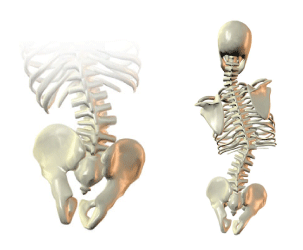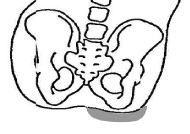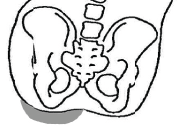Share:
Hello all!
In last month's article, I talked about the goals of seating and considerations for generic seating product parameters to achieve seating goals for your client.
This month, I would like to take a practical approach so that you can see how choice of a cushion can help to achieve seating goals. Let's take the example of a client with a pelvic obliquity.

Right Obliquity Compensating Scoliosis
The figure on the left shows a client with a Right Pelvic Obliquity – the right ASIS is lower than the left ASIS. The figure on the right shows the compensating scoliosis that is seen with a pelvic obliquity. In doing your hands-on assessment with your client, you must determine whether the pelvic obliquity is a fixed or flexible posture for your client, as the answer to that will determine how you address it.
Flexible Pelvic Obliquity
Build up under the low side

If the client's pelvic obliquity is flexible, due to poor or absent muscle strength or tone, and if the client can tolerate correction, you should consider selecting a cushion in which you can build up under the low side of the pelvis with pressure relieving material to provide support to maintain the pelvis in a level position. (See figure below.) In this way, you are bringing the client's pelvis to a neutral position. You will see that overall posture improves by correcting the flexible pelvic obliquity - the client may no longer present with a compensating scoliosis.
Fixed Pelvic Obliquity
Build up under the high side

If the client's pelvic obliquity is fixed, due to muscle or joint contractures, you should consider selecting a cushion in which you can build up under the high side of the pelvis with pressure relieving material to accommodate this posture. (See figure below.) Building up under the high side of the pelvis allows the pelvis to be fully supported, offering a stable base of support in which pressure is redistributed over a greater surface area. If the fixed pelvic obliquity is not addressed through seating, peak pressures will be found at the low ischial tuberosity.
Now, remember that for the client with the fixed pelvic obliquity, the accompanying scoliosis will not be corrected by the cushion. The scoliosis will need to be addressed through positioning with the backrest and associated components – but that is a topic for a future Clinical Corner article!